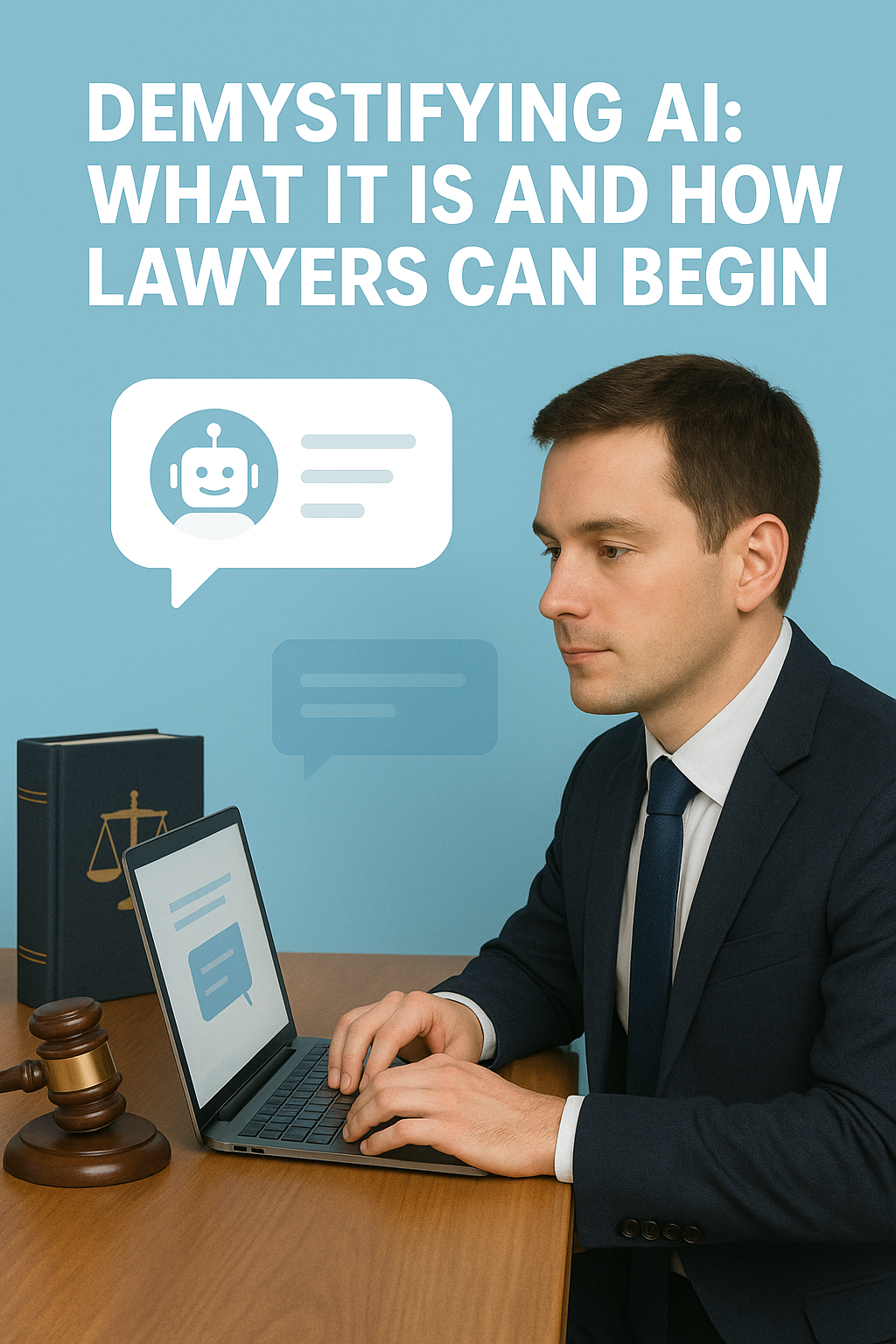Artificial Intelligence. For some lawyers, the term still conjures sci-fi images of robots and sentient machines. For others, it sounds like something tech-savvy firms are dabbling in, somewhere in the distance. But here’s the truth: AI is already in the legal world, quietly streamlining tasks, saving time, and giving lawyers a new kind of edge.
This guide is designed for lawyers and legal staff who are curious about AI but haven’t taken the plunge. We’ll walk you through exactly how to start, what questions to ask, and how to use it safely and effectively.
What Is AI, Really?
Think of AI as your ultra-efficient legal assistant. It doesn’t replace your legal mind—it complements it. AI tools can:
- Summarize long documents in seconds
- Answer basic legal questions
- Help brainstorm arguments
- Organize information quickly
But just like an assistant, it needs guidance and supervision. It won’t make decisions for you, and it shouldn’t replace your professional judgment.
Step 1: Creating an AI Account
Let’s start at the beginning.
- Choose a platform. For general use, ChatGPT (by OpenAI) is a great place to start. Visit chat.openai.com.
- Sign up. You’ll need an email and a phone number. There’s a free version, but the paid version (ChatGPT Plus) gives access to the more powerful GPT-4 model, which is often better for legal-style tasks.
- Agree to terms. Review the terms of use, especially regarding data privacy.
Step 2: Asking Your First Questions
Start simple. You can use AI to:
- Clarify legal concepts: “Explain the difference between negligence and recklessness.”
- List elements of a legal claim: “What are the elements of a breach of contract?”
- Summarize statutes: “Summarize the key provisions of the ADA.”
These are great for brushing up on basics, training new staff, or getting a second perspective on legal concepts.
Ethical Reminders
- Never share client-identifiable information. Treat AI like a helpful intern who hasn’t signed an NDA.
- Always verify. AI can sometimes “hallucinate” or present outdated information. Use it as a starting point, not the final word.
Coming Next: Using AI for Document Review and Legal Research
In Part 2, we’ll dive into how to use AI to summarize contracts, organize case materials, and even help draft simple memos—all without risking client confidentiality.
The future of law isn’t robotic—it’s augmented. And it starts with a few smart questions.


